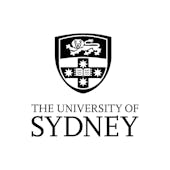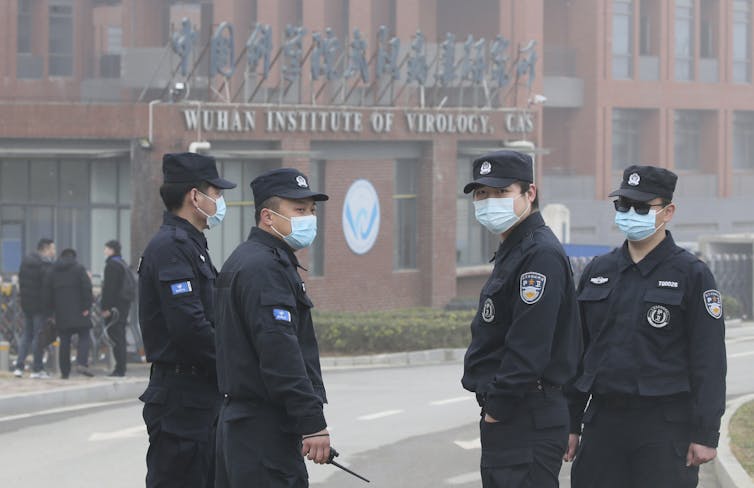The WHO report into the origin of the coronavirus is out. Here’s what happens next, says the Australian doctor who went to China

The WHO report into the origin of the coronavirus is out. Here’s what happens next, says the Australian doctor who went to China
March 31, 2021 4.58am BST
Author
 Dominic Dwyer
Dominic Dwyer
Director of Public Health Pathology, NSW Health Pathology, Westmead Hospital and University of Sydney, University of Sydney
Disclosure statement
Dominic Dwyer does not work for, consult, own shares in or receive funding from any company or organisation that would benefit from this article, and has disclosed no relevant affiliations beyond their academic appointment.
Partners

University of Sydney provides funding as a member of The Conversation AU.
The Conversation UK receives funding from these organisations
View the full list
We believe in the free flow of information
Republish our articles for free, online or in print, under Creative Commons licence.
Republish this article
The World Health Organization (WHO) overnight released its report into the origins of the coronavirus, a report I contributed to as a member of the recent mission to Wuhan, China.
The report outlines our now well-publicised findings: SARS-CoV-2, the virus that causes COVID-19, most likely arose in bats, and then spread to humans via an as-yet unidentified intermediary animal. The evidence we have so far indicates the virus was possibly circulating in China in mid-to-late November 2019. We considered viral escape from a laboratory extremely unlikely.
Read more: I was the Australian doctor on the WHO's COVID-19 mission to China. Here's what we found about the origins of the coronavirus
However, the release of the report prompted governments, including in the United States, United Kingdom and Australia, to share their concerns over whether investigators had access to all the data. The joint statement also called for greater transparency when investigating pandemics, now and in the future.
So what happens next?
Our report also recommended what research is needed for a more complete picture of the origins of the coronavirus.
The key focus of this next stage of investigations is looking at what happened before people realised there was a clinical problem in December 2019, not just in China but in other countries with early cases, such as Italy and Iran. This would give us a more complete picture of whether SARS-CoV-2 was circulating earlier than December 2019.
For instance, if we just focus on China for now, we know there were influenza-like respiratory illnesses in Wuhan in late 2019. In fact, we looked at data from more than 76,000 cases for the WHO report, to see whether these could have been what we now call COVID-19. But work is already under way to re-analyse those data using different techniques, to see if we’ve missed any earlier cases.
Read more: Yes, we need a global coronavirus inquiry, but not for petty political point-scoring
Talks are also under way to see whether blood donations in China in 2019 can be analysed to see if they contain antibodies to SARS-CoV-2. This would tell us whether the people who donated those samples had been infected by the virus. These types of investigations take time.
Then there’s what we can learn from molecular epidemiology (the genetic makeup of the virus and its spread). For instance, if we find a lot of variation in the genetic sequence of early samples of SARS-CoV-2, this tells us there had already been transmission for some time. That’s because the virus doesn’t mutate unless it infects and transmits. We can use modelling to say what might have happened up to three or more weeks beforehand.

Although the WHO report has looked at the role of markets in China in the spread of SARS-CoV-2, we need to re-analyse data and look further afield. Roman Pilipey/EPA/AAP
We also need to link those molecular epidemiology data to actual clinical data. Until now those data have largely been separate, with the molecular data held in research or university laboratories and the patient data held elsewhere. We need to make those connections to tell us which infections were related, and how far back in time they go.
There are also many biological samples sitting in laboratories around the world that we need to analyse, and not just in Wuhan. So we have to do a bit of detective work to locate them and analyse them to understand the pattern of disease and to help sort out the origin. There is no central database of samples and what antibodies or genetic material they might contain.

We considered it was extremely unlikely the virus escaped from a laboratory. But laboratories around the world hold samples that have yet to be analysed and could give us clues. Koki Kataoka/AP/AAP
For instance, there are SARS-CoV-2 positive blood donations in the US and France, and cases in Italy, and there’s sewage testing in Spain. These are places with early outbreaks of respiratory illnesses that may help us find out if SARS-CoV-2 was circulating earlier than we first thought.
We also need more studies into the role of frozen food products in transmitting the virus. Although we considered the “cold chain” a possible pathway to transmission, we still don’t know how big a factor this was, if at all.
Read more: Was coronavirus really in Europe in March 2019?
Finally, there’s ongoing sampling of animals and the environment for signs of SARS-CoV-2 or related viruses. Can we find the parent virus (the one that eventually mutated into SARS-CoV-2) in a bat in a cave somewhere? Where do we look? At bats across Southeast Asia, Central Asia, into Europe? We need to look at the range of these bats and where they live. These types of investigations can take ages.
Can we find the virus in an intermediary animal, and if so, what type of animal and where? Again, these are difficult studies to set up.
Cooperation needed
The key here is to keep trying to work together and avoid the over-politicisation of the whole exercise.
Rather than blaming governments, we need to foster cooperation and trust between investigators, between and within countries. This not only helps us during this pandemic; it’s the key to managing future pandemics. The more cooperative we are, the more likely we are to get the best results. We have to make sure politics doesn’t muck that up.
- China
- Coronavirus
- World Health Organization (WHO)
- Wuhan
- COVID-19
- SARS-CoV-2
https://www.copperberg.com/members/demon-slayer-mugen-trainrevhid-com/profile/ https://www.copperberg.com/members/evengalionrevhid-com/profile/ https://www.geogebra.org/m/jty5g85h https://teamfeed.feedingamerica.org/index.cfm?fuseaction=donorDrive.participant&participantID=5341 https://teamfeed.feedingamerica.org/index.cfm?fuseaction=donorDrive.participant&participantID=5342
https://www.copperberg.com/members/lokeburgas-vip/profile/
https://www.copperberg.com/members/rayaandlastdragonburgas-vip/profile/
https://www.copperberg.com/members/monster-hunter-full-movierevhid-com/profile/
https://www.copperberg.com/members/tom-and-jerry-2021-fullrevhid-com/profile/
https://www.copperberg.com/members/coming-2-america-2021-fulrevhid-com/profile/
https://www.copperberg.com/members/watch-noboody-2021-fullrevhid-com/profile/
https://www.copperberg.com/members/demon-slayer-mugen-trainrevhid-com/profile/
https://www.copperberg.com/members/evengalionrevhid-com/profile/
https://www.geogebra.org/m/jty5g85h
https://teamfeed.feedingamerica.org/index.cfm?fuseaction=donorDrive.participant&participantID=5341
https://teamfeed.feedingamerica.org/index.cfm?fuseaction=donorDrive.participant&participantID=5342
https://teamfeed.feedingamerica.org/index.cfm?fuseaction=donorDrive.participant&participantID=5343
https://teamfeed.feedingamerica.org/index.cfm?fuseaction=donorDrive.participant&participantID=5344
https://teamfeed.feedingamerica.org/participant/5345
https://teamfeed.feedingamerica.org/index.cfm?fuseaction=donorDrive.participant&participantID=5347
https://teamfeed.feedingamerica.org/index.cfm?fuseaction=donorDrive.participant&participantID=5349
https://slexy.org/view/s2ZkGHTXvt
https://pastelink.net/2ruxw
https://paiza.io/projects/flCdvPrGo7AhYAmjzEVpbw?language=php
https://paste.feed-the-beast.com/view/52cb7661
https://paste2.org/mf2Vz1M8
https://paste.ee/p/qMGIr
https://www.posts123.com/post/1464607/backlash-intensifies-against-team-trump-after-capitol-riot
https://paiza.io/projects/FHQvFcQi6qDfV6ljWIk5pw
http://paste.jp/78dde435/
https://jsfiddle.net/9q1w84mf/
https://paste.feed-the-beast.com/view/0f90e5bc
https://onlinegdb.com/SyiCws-SO
https://6do.news/post/3809
http://recampus.ning.com/profiles/blogs/covid-19-the-movie-online-pending
![WATCH||365 Dni [2020] FULL FREE ONLINE ||HD VERSION](https://www.thewyco.com/include/images/6008365 dni (2020).jpg)
WATCH||365 Dni [2020] FULL FREE ONLINE ||HD VERSION
- WATCH||365 Dni [2020] FULL FREE ONLINE ||HD VERSION

Copado-Developer Certification Exams That You Need to Check Out
- Vision and inspection systems are also known as machine vision. Lots of individuals enjoyment of their profession, and many individuals delight finding.

The film A Quiet Place Part II Print Box Office Records during the Pandemic
- Emily Blunts A Quiet Place Part II film revived the North American Box Office in its premiere week during the pandemic. The post-apocalypse thriller film

Eight die in Senegal football stadium chaos thermochemical
- Fans from the opposing teams, US Ouakam and Stade De Mbour, exchanged blows and numerous projectiles
